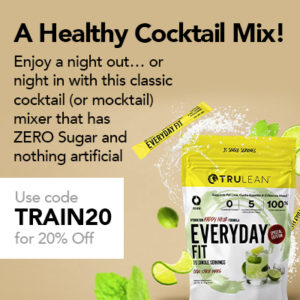Fitness
How To Relieve Wrist Pain
Nothing takes you out of your fitness stride quite like an injury – especially in your joints. It can be frustrating when you are steadily gaining strength and get bogged down by a wrist injury and can’t keep your gains, well – gaining.
If this is you, we want you to get back to health and reaching your goals as soon as possible. So, here is a breakdown of everything you need to know about wrists so you can get back into the gym and being a badass.
Why does my wrist hurt?
Wrist pain is caused by either disease or injury and can affect any aspect of the joint. This includes the bones, ligaments, and connective tissue. However, for gym goers, sprains and strains are the most common types of wrist pain.
A sprain is an injury to the ligament triggered by a sudden and sharp force to the wrist. This is usually caused when exerting extreme pressure on the wrist – like a fall. The soft tissue around the wrist, hand and fingers is damaged, becomes painful to touch and is likely to develop swelling or bruising.
A strain is a tear in the muscle fibers as a result of bad form or repetitive movements, most commonly caused when weightlifting. Cellucor Ambassador and Personal Trainer, Andy Ward explains: “A sprain is more serious [than a strain] as this includes tendon or ligament damage, which is a much harder piece of connective tissue and therefore, can take a little longer to recover and repair.”

Foods to help reduce wrist pain
If you are suffering from wrist pain, the answer to your relief might be in the pantry. While there is no miracle cure, there are plenty of foods that aid recovery.
Ward suggests the following:
1. Vegetables and berries
Berries, in particular, are packed with Vitamin C that rebuilds collagen and antioxidants that help inflammation.
2. High-potassium and magnesium food sources
Foods such as spinach, asparagus and kale are perfect because the potassium levels help to speed healing while the magnesium is important for muscle recovery and rest.
3. Bone broth
This is a natural source of Collagen, which helps heal tendons and ligaments.
It may also be worth considering a joint support supplement with Glucosamine, MSM and Chondroitin as they have been proven to aid joint health.
Exercise to decrease wrist pain
While you may be eager to get back to the gym, remember to listen to your body and give yourself sufficient rest from anything that might prevent recovery and make your injury worse.
However, once you’re recovered and keen to get back to it, Ward suggests, “avoiding straight bar movements for triceps and biceps. This will help decrease the risk of wrist pain. There are a number of exercises to help strengthen your grip and wrist, which will, in turn, reduce the chance of wrist pain.
“Using an EZ bar mimics the natural curve of your hand, reducing the pressure on the wrist. Kettlebells are particularly useful, movements such as swings and presses will help strengthen up the wrist. Other exercises such as barbell or dumbbell wrist curls and extensions help to give strength. Aim for 3 sets of 10-15 reps using a slow tempo.
“In order to strengthen your grip, the best exercise I believe is deadlifting (without the use of lifting straps). You will certainly notice the increase in strength as you’ll be able to pull more weight off the ground through the movement.”

Wrist strengthening stretches
Instead of using the time between sets to just take a breather, doing one of the following stretches will help you build up your wrist strength back up.
Praying position
Stand and put your palms together in a praying position in front of your face. Your elbows should be touching each other.
Keeping your palms pressed together, slowly spread your elbows apart and lower your hands to waist height and stop when you feel the stretch. Hold this for 30 seconds and repeat.
Clenched fists
Start seated and place your hands, palms up on your thighs. Close your hands into fists, being wary not to clench too tightly.
Keeping your forearms on your legs, raise your fists and bend the wrist from your legs and toward your body. Hold this for 10 seconds before lowering your fists and repeat 10 times.
Resistance band wrist flexion
Wrap a resistance band around your hand with your palm facing up and your elbow by your side, as if doing a dumbbell curl.
Keep the elbow bent to 90 degrees and slowly curl your wrist up, squeezing your hand and forearm muscles. Repeat on the other wrist for three sets with 15 reps.
Wraps and supports
To wrap or not to wrap? While the hardcore bodybuilders are busy debating over whether strapping up to lift is cheating, we’re just focusing on making sure our wrists are supported.
Wraps, not to be confused with straps, are a great way to help support your wrists before and after an injury. If you have weak wrists, or are particularly susceptible to injury (if you are hypermobile for example) it’s worth using them during training.
If your injury is particularly bad, a wrist support (we like this wrist support from össur) is great at providing pain relief while your injury heals. Opting for something with more structure is perfect for those suffering from strains and who want to keep active during recovery.
Prevention
It’s also imperative that you are always executing your lifts correctly. Improper form is one of the top reasons why people get injured, so use the following tips to ensure you’re protecting yourself.
1. Use proper form
It doesn’t take long before the gym veterans will come and tell you what you’re doing is wrong. However, seek help and learn how to do each exercise correctly. Not only will you avoid hurting yourself, but you’ll also maximize your workouts.
2. Lift the appropriate amount of weights
It’s tempting to copy your gym crush and get out the high KGs, but if it’s too heavy for you, no one is going to be impressed when you end up injuring yourself.
Ideally, you should be using a weight that you can comfortably lift 12-15 times. As you get stronger, you can increase your weights, but for starters, stick to what is right for you.
3. Rest
While the Department of Health and Human Services recommends strength training exercises twice a week, it’s important to rest. Also, don’t train the same muscles two days in a row.
And there you go, now go forth, wrap up and smash your goals.






















